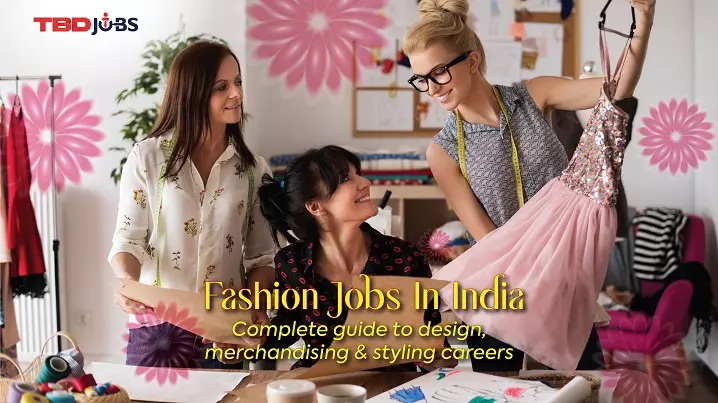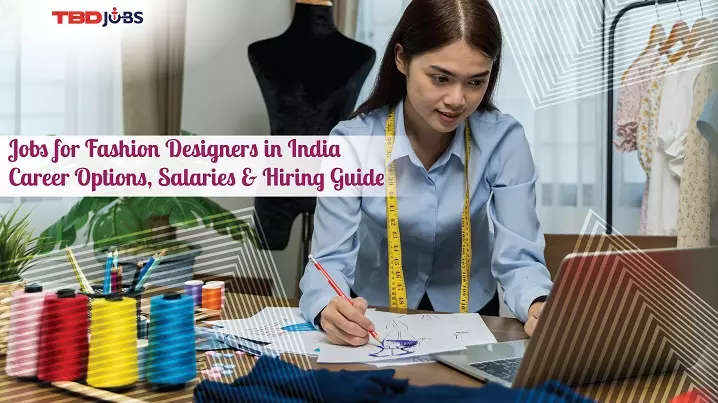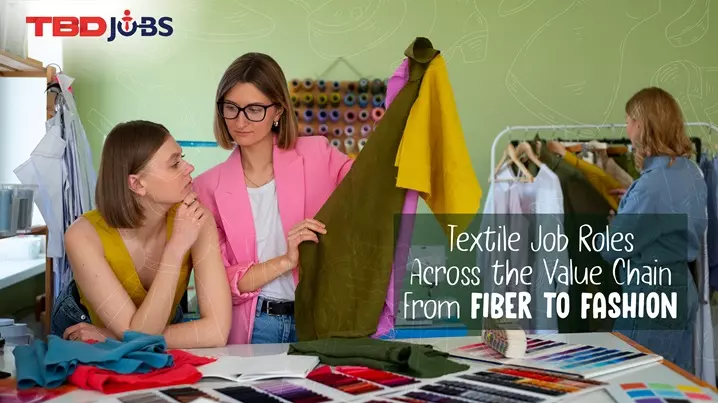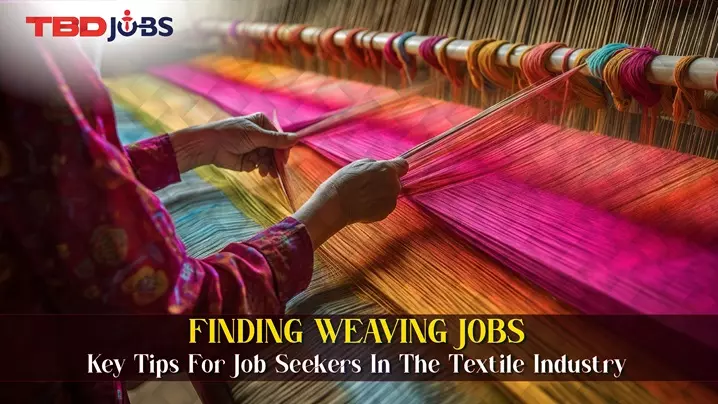The fashion world is a dynamic world of creativity and business. The sector has constantly been changing and providing ample opportunities for career growth. Here is why fashion is considered an alluring path for aspiring designers. Breaking into the fashion design industry demands creativity, persistence, and the ability to stand out in a competitive market. However, you can convert your passion for fashion into a successful career with effective strategies and a proactive approach.
Tips for Landing Your Dream Fashion Designer Job and Thriving in This Competitive Landscape.
Strong Foundations in Fashion Designing
Starting with a tour through the fashion world, one needs a strong foundation in fashion design. Although natural talent often can do the trick, formal education or other tailor-made courses polish one's designs and are as valuable as anything. Other useful programs include fashion design, textiles, pattern making, and fashion history. To round out the technical side of learning, including digital design software such as Adobe Illustrator and CLO 3D will also help round out knowledge in this field.
If full-time education opportunities are out of the question, follow this up with web-based classes, workshops, or short programs in key areas. As if to officially declare your profession, the fashion industry favours hands-on skills. Therefore, you should immediately apply the skills learned before entering your system to your work.
Show-Stopping Portfolio Preparation
The most valuable asset of any designer is their portfolio. A creative portfolio showcases the breadth of your abilities, reflects your unique creative voice, and demonstrates a clear command of design principles. When searching for your fashion designer job, there should be all your best work in the case of a good portfolio: sketches, completed garments, digital designs, and mood boards. It would be best if you distinguished between changing styles and techniques.
Also, your portfolio should tell a story. It will show the design process from concept to final product. Employers want to see the finished piece and how you arrive at the designs. Include swatches of fabric, patterns or illustrations that add context to your designs.
Gain Practical Experience through Internships
Real-world experience in the fashion world is not matched by anything else. Interning offers firsthand knowledge of the day-to-day operations carried out by a fashion house and learning from seasoned designers. Interning from a big fashion house to a small boutique can help build industry connections, hone your skills, and enhance your portfolio.
While searching for an internship, do not consider yourself greater than a popular brand. Small firms can offer you even more diverse tasks that will make you more aware of the domain. Ensure both your resume and portfolio emphasise the skills, qualifications, and experiences the internship specifically asks for. If you have any experience in clothing or other related fields, no matter how minor, bring it up in your application.
Network Like a Pro
Of course, who you know in the fashion world can sometimes be as important as what you know. Networking helps find jobs and is often a door opener to many unadvertised opportunities. Industry events, fashion shows, and design expositions should also be attended to meet persons in the field. Social media platforms are also interesting tools for connecting with industry insiders, following trends and reaching out to recruiters.
Gradually establish networks with student classmates, professors, and potential internship sponsors. Ensured via associations, competitions, and conferences in the fashion industry. Refrain from being intrusive about making connections; casual conversation may lead to a great opportunity or an excellent contact.
Stay Current on Industry Fashion News
It's a highly dynamic industry driven by seasonal trends and cultural shifts. Therefore, staying updated regarding the latest developments, upcoming designers, and technological innovations is always important for individuals searching for a position as a fashion designer. Over and over again, keep reading fashion magazines, online publications, blogs, and social media accounts dealing with fashion and design. Once you know the trends, you will be in touch; your designs will synchronise with your target audience.
Being abreast of current trends can also bring out chances during interview times. It shows that you're related to the industry and can garner designs based on the market's demands.
Make a Great Self-Promoter
Self-promotion is an entry into the fashion industry. Develop a personal web presence by sharing and showing your work online for design, social media, and personal websites. Use Instagram, Behance, and Dribble to view portfolios in the wider world. Using hashtags in design work and joining online design challenges further serves to reach a wider audience.
Business Savvy: Be Aware of the Business Side of Fashion
Without creativity, a job in fashion design would be demanding. You can also diversify and apply your understanding of business principles in the fashion industry's marketing, sales, production, or brand development. Learn about the roles of a fashion company: product development, merchandising, and retail management.
Understanding the inside-out workings of the fashion business, you would also have a good chance of success if you decide to start up your label. If you can get the hang of branding, pricing strategy, and distribution channels, you'll likely turn your creative vision into a money-making business.
Find a Mentor
A fashion business mentor can accelerate your growth as a designer. Exasperating your practice and development, they also enable you to grow by giving you essential feedback on your designs and providing you with crucial pieces of information about trends in the industry. A mentor will also introduce you to other people of significance in the field and help you network better.
Start with your professors, internship supervisors, and even social media professionals you admire. It's always right to ask them for advice or to share your goals with them; people in the industry are usually more than happy to help young designers navigate their careers.
Be Ready for the Process of Job Searching
There are many careers for fashion designers, but finding them can be challenging; however, there may be a strategic approach to seeing them. Describe what kind of design work you want to do: haute couture, ready-to-wear, accessories, or sportswear. Knowing your focus will guide you toward target companies and tailor your application.
When applying for fashion designer jobs, tailor your resume and cover letter to fit each application, focusing on experiences, skills, and achievements that might be relevant. Align keywords from the job description. This is crucial for passing through the ATS software that most employers use.
Look for Jobs Outside of Conventional Fashion Companies
These jobs are not just behind the windows of fashion houses. In retail, sports, entertainment, and even technology, many corporations demand skills in fashion and design. Costumes, fashion consulting, or brand uniforms that are functional and fashionable are a few areas of interest.
As more sustainable fashion comes to the surface, ethical fashion designers have the opportunity to create their nuances in the industry. In today's competitive world, eco-friendly and innovative brands seek that creative outside-the-box thinker. Look into startups, sustainable brands, or even corporate design work where you can still make a difference.
Survive Rejection and Improve
The fashion industry is a challenging place to find a job in. Experience rejection, and do not be discouraged by it. Learn to take every rejection as an opportunity to learn, grow, and improve. Sometimes, it takes talent to get that specific job or internship. Other times, it is the timing or even a clash of styles.
Always consider and work on feedback to improve your work. No one is successful overnight, but most professional designers must endure hard times they must overcome. Remain energised through continuous work on the profession, increasing your capability, and exploring new design methods.
Leverage TBD Jobs to Access Fashion Design Positions
Access to a niche platform might be the difference when you are looking to find jobs in fashion design. TBD Jobs is a great search platform for designers coming into the fashion industry. With listings ranging from entry-level to senior positions in all fashion sectors, you can find jobs in haute couture, ready-to-wear, and sustainable fashion at TBD Jobs.
Freelancing or Your Line
Freelancing is good if you need help finding a full-time job. Freelance designers usually have project-based contracts, earning money based on the completion of specific projects. That way, they can work on different projects and build a wonderful portfolio, making money simultaneously.
Or, venturing out and designing your line is thrilling. That takes creativity, business savvy, and determination but will also allow you to pursue your take on design. A small capsule collection or even accepting custom commissions will test the market before building further.
Stay Resilient and Passionate
It takes persistence and passion for the craft to enter the industry as a designer. The competition is tough, but dedication and hard work can play a decisive role in surviving and thriving in fashion. Each challenge you'll have to overcome will be a chance for you to grow and learn while becoming a designer. Keep growing as a designer and finding inspiration in everything happening around you as you push your creativity's limits.
Conclusion
Becoming an accomplished fashion designer means becoming a professional at what you do, networking, and strategic approaches to the job market. So here are some insider tips to help navigate the industry and make your mark. With TBD Jobs, you will find many job opportunities in the fashion world that will help turn your dream into reality.
Explore your passion, work hard, and take steps to carve out your space in the vibrant fashion world!











.webp)













Leave a Comment
2 Comments
30 Sep 2025, 06:40 PM
15 Oct 2025, 07:14 AM